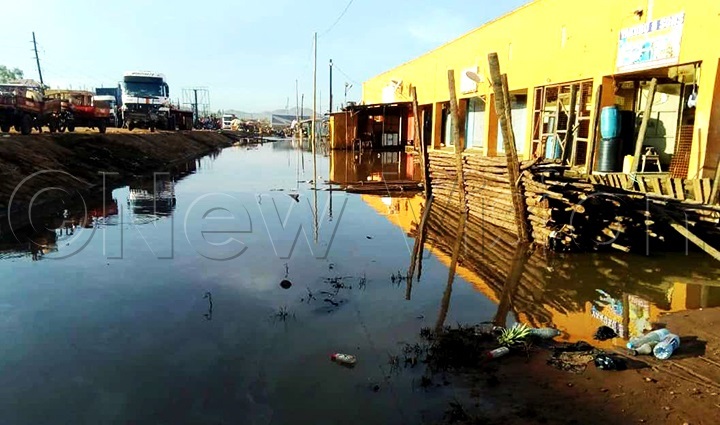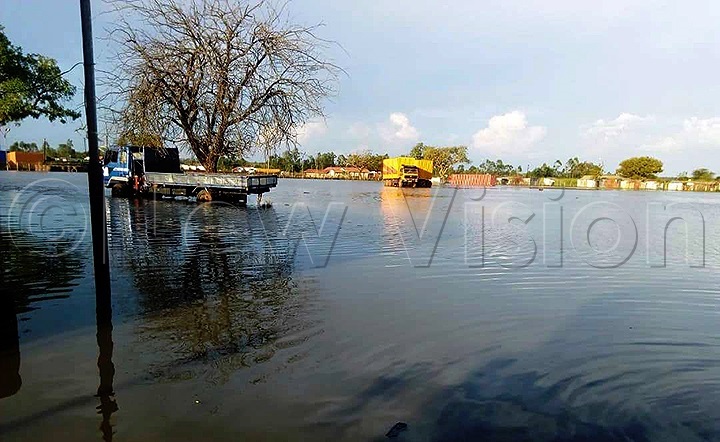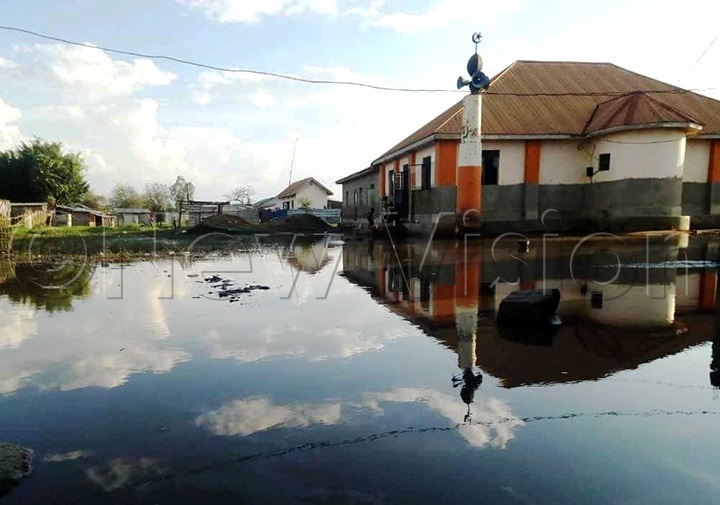Floods stifle trade in Elegu, residents blame gov't
This year alone, the floods have hit the busy town of about 3,000 people four times with the latest being on Wednesday. It affected about 700 households.
Every year, hundreds of traders living in Elegu town council in Amuru district count lose in millions of shillings due to floods from River Unyama.
This year alone, the floods have hit the busy town of about 3,000 people four times with the latest being on Wednesday. It affected about 700 households.
It has been the trend since 2012 when the customs office was shifted from Bibia to the current location.

The worst was in 2017, two lives were lost. Margret Auma, the chairperson of Elegu Women Cross Border Traders Saving and Cooperative Society estimates that merchandise and other property worth over sh500m is lost every year in floods.
The cooperative which started in 2018 has over 300 members who are Ugandan women traders.
"We don't have a proper market. The traders put their goods on the ground and when it floods, it is hard to rescue all of them. That is how we are suffering here," Auma told New Vision.
Auma added that in 2018, the business community was excited when the district chairman assured them that the central government had secured funding for a flood mitigation plan which has never materialized to date.
"If we were not organized as traders to support ourselves, very many of us would have stopped business long ago. What puzzles us is that government seems not to have ears and eyes to take any step. It is just business as usual," she observed.
Ivan Kakaire the Uganda Revenue Authority (URA) Customs regional manager said the floods come with a lot of encumbrances like delays in clearing goods since cargo trucks have to line up to Bibia which is 7kms from Elegu border point.
Floods stifle Ministry of Trade developments
Amelia Kyambadde, the Minister of Trade Industry and Cooperatives acknowledged that the Ministry had planned to kick start a lot of infrastructural development this year at Elegu. However, they have all been put on halt.

"We are trying to get experts to help us with the water problem. I have seen the technical report and this requires technical intervention before we start constructing," she told New Vision.
The Minister added that such similar constructions have already started in four Business Export Zones (BEZ's) at Katuna in Kabale district on 238.8 acres, Oraba in Koboko district, Lwakhakha in Namisindwa district on 27 acres and Masafu in Busia district.
The constructions range from border markets, warehouses, storage facilities, light processing facilities and commercial houses.
On September 3, 2020, the New Vision reported that the trade ministry had acquired 200 acres of land in Amuru district. However, Kyambadde said the land was still clogged with water.
She said experts were developing a flood mitigation plan.
During a project progress media briefing at Uganda Media Centre on the construction of the BEZ's, Kyambadde said the Ministry got about sh5.5b under the Regional Integration Implementation Project supported by Common Market for Eastern and Southern Africa (COMESA).
The fund was used to conduct environmental impact assessments and developed master plans, architectural designs, Bills of Quality and construction tender documents for Katuna, Lwakhakha, Busia, Oraba and Elegu.
High-cost worries ministry of trade
Meanwhile, Micheal Lakony the Amuru district chairman was surprised to learn that Ministry of Trade had a detailed report on the flood mitigation plan but has never been shared with the district since last year.
During telephone conservation, Lakony tasked Julius Kasirye the officer in charge of Internal Trade to explain the next course of action.
Kasirye said the cost quoted in the bill of quantity for the three mitigation options was just too high for the trade ministry shoulder.
"We are considering partnering with other Institutions or Ministries like works because the cost is just too much," Kasirye told Lakony without disclosing the actual amount.
Efforts by New Vision to reach Kasirye for clarification were futile as he declined to talk claiming that he had not been cleared to talk to media.

However, Lakony noted that the floods in Elegu are known that they take place every year and government should rather come out with a long-lasting solution than giving food aid when it floods.
"We may be in a position to think of an industrious action so that the government can listen to us. It is improper to treat this always as an emergency. You find the office of the Prime Minister is sending relief as if that is what people want" the chairman noted.
Osborn Oceng, the Amuru Deputy Resident District Commissioner called for calmness as the government comes out with a clear strategic plan.
Origin of River Unyama
River Unyama originates from the eastern direction of Unyama sub-county trading centre in Gulu district and heads in the northern direction through Bungatira and Pariko sub-county.
It later enters Amuru district through the sub-counties of Pabo and Atiak before connecting to White Nile which forms the boundary between Uganda and South Sudan.
Simon Wokorach a resident of Elegu town council said the river is also joined by several small rivers right from Gulu till it's final destination thus making it carry huge volumes of water.
This story has been published with support from The African Centre for Media Excellence (ACME) and the Delegation of the European Union to Uganda.